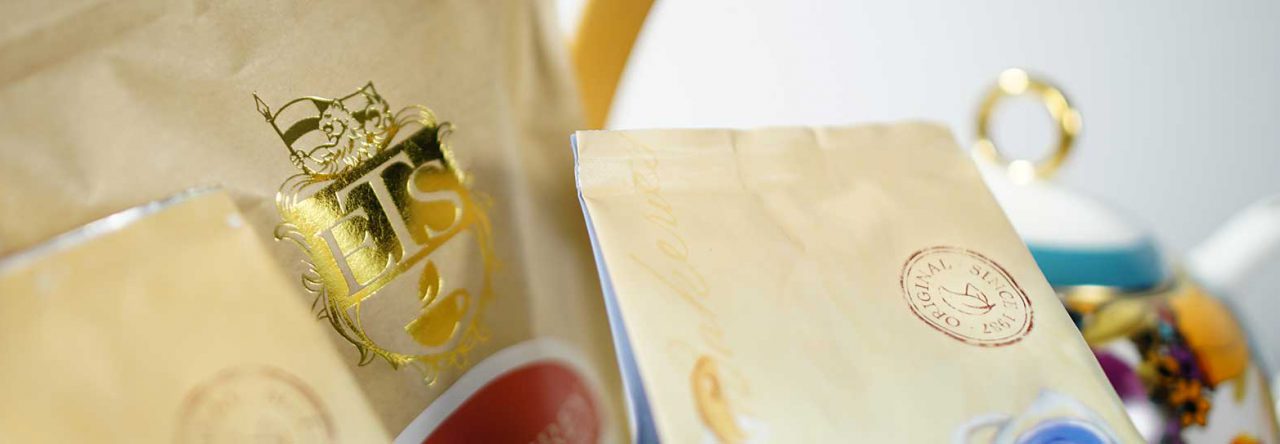 Despite its humble appearance and role as default teapot in so many English cupboards, the Brown Betty is a much more interesting piece of tea ware than one might assume.
Despite its humble appearance and role as default teapot in so many English cupboards, the Brown Betty is a much more interesting piece of tea ware than one might assume.
The ancestral forms of the Brown Betty came into production and use in England near the close of the seventeenth century, when craftsmen began using the unique red clay found in the Bradell Woods area of Stoke-on-Trent to fashion into teapots. The application of the special Rockinham glaze, which gives the Brown Betty its characteristic namesake brown, and further refinements in the rounded shape of the main bowl area resulted in the teapot we know today. The device’s current, essentially unchanged form was solidified during the reign of Queen Victoria, as tea seeped out from the aristocracy to the common man and tea consumption in England grew exponentially.
Several decades earlier in England tea had been largely unavailable to the underclasses because of its high cost and the high cost of the tea wares required for preparing and drinking it. This changed during the course of the 19th century with further expansion of the British Empire, which resulted in lower costs of goods sent back from the territories exploited by British merchants and strong-armed by the British military. Importantly, the establishment of tea plantations in the Indian Sub-continent brought down the cost of tea considerably. In addition, more cost-effective industrial manufacturing processes brought the cost of teapots and tea cups down as well.
There are, of course, a number of famous ceramics manufacturers in England. Cauldon Ceramics, who hold exclusive rights for manufacturing the Brown Betty, is just one of them. In contrast, some of the other companies, like Wedgwood and Spode for example, concentrated their production on fine porcelain and bone china, marketing more delicate and expensive types of teaware and dinnerware, while the makers of the Brown Betty kept it much more utilitarian and functional in appearance.
 Aside from all of that history and background, the characteristic of the Brown Betty that should be most important to tea drinkers is that it brews and serves tea exceptionally well. Anyone with even a marginally serious interest in drinking English style teas should own one. They’re not fancy, or necessarily elegant in appearance, but they’re damned good teapots. The rounded shape of the teapot is particularly good for steeping loose leaf tea. It is said that the steeping leaves swirl around inside of the bowl of the pot, which might be true, although it’s a hard thing to prove (or see). But one thing that is much more evident is the way that the pot retains heat. The high heat retention brews better tea, and the pot keeps it hot longer after it’s finished steeping. A full pot of tea in a Brown Betty sitting out on a table will stay quite drinkably warm for longer than you’d expect, varying with the ambient temperature of the room. Using a tea cozy would probably help retain the heat even longer, if you were the type to use one.
Aside from all of that history and background, the characteristic of the Brown Betty that should be most important to tea drinkers is that it brews and serves tea exceptionally well. Anyone with even a marginally serious interest in drinking English style teas should own one. They’re not fancy, or necessarily elegant in appearance, but they’re damned good teapots. The rounded shape of the teapot is particularly good for steeping loose leaf tea. It is said that the steeping leaves swirl around inside of the bowl of the pot, which might be true, although it’s a hard thing to prove (or see). But one thing that is much more evident is the way that the pot retains heat. The high heat retention brews better tea, and the pot keeps it hot longer after it’s finished steeping. A full pot of tea in a Brown Betty sitting out on a table will stay quite drinkably warm for longer than you’d expect, varying with the ambient temperature of the room. Using a tea cozy would probably help retain the heat even longer, if you were the type to use one.
These are teapots made out of good materials. The Rockingham glaze is strong and durable, and it is also particularly shiny and attractive. One of the accompanying photographs shows the red of the unglazed clay, on the edge of the lid off the pot, one of the distinguishing characteristics of the Brown Betty. The whole feels solid and well constructed.
Brown Betty teapots are surprisingly inexpensive, although it can be hard to locate authentic examples. This is to be expected when, in spite of the teapot’s fame and ubiquity, all production output comes from a single factory. Since the real thing can be scarce frauds are quite common. Do not be fooled by a plain brown ceramic teapot with deceptive labeling! While ordinary generic ceramic teapots are fine, they do not have the exceptional qualities of a genuine Brown Betty. If the teapot doesn’t have a British flag sticker on it and doesn’t have “Cauldon” and “Made in England” on the bottom it’s not the genuine article and will fall short of expectations.
© Online Stores, Inc., and The English Tea Store Blog, 2009-2014. Unauthorized use and/or duplication of this material without express and written permission from this article’s author and/or the blog’s owner is strictly prohibited. Excerpts and links may be used, provided that full and clear credit is given to Online Stores, Inc., and The English Tea Store Blog with appropriate and specific direction to the original content.



Leave a comment